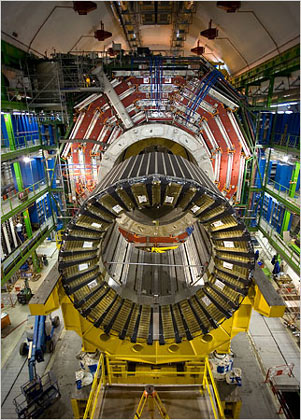You are hereWcP.Scientific.Mind's blog
WcP.Scientific.Mind's blog
Large Hadron Collider hibernates after wrong sort of big bang caused by hellion leak, to re-awaken in Spring'09
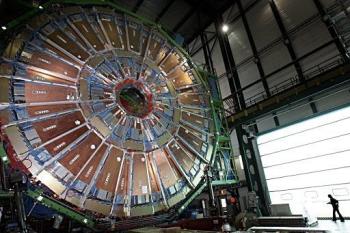
(quote)
Two weeks ago, the most powerful atom smasher to be built had been switched on to global acclaim and scientists were ready to begin experiments that could unlock many of the enduring mysteries of the Universe. They are going to have to wait a little longer. On Friday the Large Hadron Collider (LHC) created the wrong sort of big bang - a fault so serious that CERN, the European Organization for Nuclear Research, announced last night that the particle accelerator would have to be shut down until next spring for repairs.
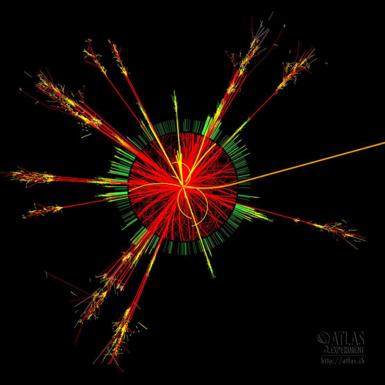
Preliminary investigations into the incident, in which a huge quantity of helium leaked from the LHC’s cooling system, have suggested that it was caused by a faulty electrical connection between two of its superconducting magnets. The fault affected a part of the accelerator that is kept chilled to within 1.9C of absolute zero, and it will have to be warmed up to room temperature before the problem can be understood fully and resolved. It will take at least three to four weeks to warm the affected sector and then to open the damaged magnets for inspection, and then another month to re-chill them to their operating temperature. read more »
Biggest physics experiment in history underway: Large Hadron Collider passes operational test, fires first beam
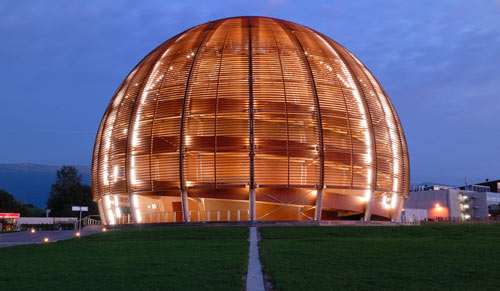
(quote)
There was screaming and whistling in physics labs and auditoriums outside Geneva - and around the world - Wednesday, as scientists whooped it up out of sheer joy.
Electric tank-car of the future? The Hinterland 1 Concept Car - an electric minivan with Prius-like aerodynamics
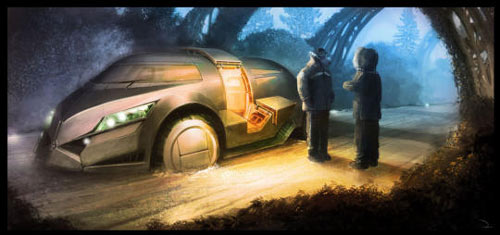
(quote)
It has the profile of a Toyota Prius interpreted by the late Maxime Faget, designer of the Space Shuttle. It's the Hinterland 1, a conceptual all-electric minivan with a drag coefficient of less than 0.25 (the Prius's is 0.26). And if its designers get their way, it'll become a Canadian icon on par with the CN Tower, Geddy Lee and Poutine. Existing purely as sketches, renderings, and specs at this point, the Hinterland 1 electric car looks like one part tank, one part VW bus with a pinch of bullet train added for flavor.
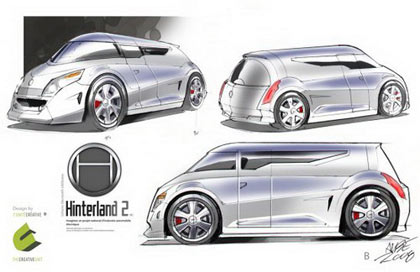
Chief designer of the Hinterland 1 is Matin Aube of Creative Unit, a veteran of Québec- based Bombardier Recreational Products, maker of the Sea-Doo watercraft, who says the project "combines sources of artistic, technical and scientific expertise" from recreational vehicles, electric motors and batteries, aeronautics, aluminium, plastics processing and video games. In theory, the sculpted body would comprise an aeronautical-style aluminum monocoque, fashioned by the same hydroforming process GM uses to create body panels for its curvy Pontiac Solstice roadster. A drive system proposed by electric-car startup Higgins-Aubé would involve a 43 kW-max motor (14kW continuous) powered by Li-ion or Zebra (Sodium Nickel Chloride) batteries with a maximum power of 37,000 kilowatts. Designers envision two models built on the same platform, a two-seater "Mini" and the six-person "Van." read more »
Galactic clash unmasks dark matter: ordinary mater and dark matter separate as two massive galaxies collide

(quote)
Striking evidence has been found for the enigmatic "stuff" called dark matter which makes up 23% of the Universe, yet is invisible to our eyes. The results come from astronomical observations of a titanic collision between two clusters of galaxies 5.7 billion light-years away. Astronomers detected the dark matter because it separated from the normal matter during the cosmic smash-up. The research team are to publish their findings in the Astrophysical Journal.
They used the Hubble and Chandra space telescopes to study the object MACSJ0025.4-1222 - formed after an incredibly energetic collision between two large galaxy clusters. Each of these large clusters contains about a quadrillion times the mass of our Sun.
25 Aug 1609. Galilei Galileo demonstrates his first telescope

(quote)
Called the Father of Modern Science by Einstein, Galileo was born into a musical family in Pisa. After studying mathematics and natural philosophy he was appointed to the Chair of Mathematics in 1589 before moving to the University of Padua where he made major discoveries in Fundamental and Applied Science. These included a military compass and an improved version of the telescope. With the later he was the first to identify the moons of Jupiter and describe the topography of our Moon.
On 25 August 1609, he demonstrated one of his early telescopes, with a magnification of about 8 or 9, to Venetian lawmakers. With a Galilean telescope, the observer could see magnified, upright images on the earth - it was what is commonly known as a terrestrial telescope or a spyglass. He could also use it to observe the sky; for a time he was one of those who could construct telescopes good enough for that purpose.
(unquote)
Image credit Giuseppi Bertini (Public Domain)
Amazing photos from Greenland, where unfortunately ice runs away by hundreds of billions of tons a year

(quote)
Ice sculptures constructed from the spare core samples by the scientists working on the North Greenland Eemian Ice Drilling project.

The ice samples, which the researchers analyze for clues to the temperature and concentration of greenhouse gases of the ancient atmosphere, are collected using this drill.

The visiting group of scientists, journalists and Danish environmental officials land at NEEM, the North Greenland Eemian Ice Drilling project. NEEM had arranged for the visitors to examine their research, which focuses on the climatic conditions which shaped the warm geologic period before the earth's last Ice Age, an important clue in understanding global warming. The camp is located approximately 600 miles north of the Arctic Circle. read more »
Missions of the largest aircrafts: Western H-4 Hercules & Airbus A380, Russia’s Antonov An-225 Mriya & ‘Caspian Sea Monster’
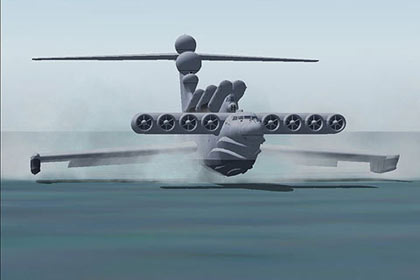
(quote)
The one Lun-class ekranoplan originally developed by the Soviet Union military transports, and based mostly on the shores of the Caspian Sea and Black, at a naval base near Kaspiysk. During the Cold War, ekranoplans were sighted for years on the Caspian Sea as huge, fast-moving objects. The name Caspian Sea Monster was given by US intelligence operatives who had spotted the huge vehicle, which looked like an airplane with the outer halves of the wings removed. After the end of the Cold War, the "monster" was revealed to be one of several Soviet military designs meant to fly only a few meters above water, saving energy and staying below enemy radar.
The 8-engined sea skimmer could have been a deadly weapon of war with it’s 6 ‘Sunburn’ anti-ship missiles and ability to travel at high speed under the radar of patrol aircraft. The Lun-class (Russian: "Hen Harrier") (NATO reporting name: "Utka"; Russian: "Duck") ekranoplan Wing-In-Ground effect vehicle was an extremely unusual aircraft designed by Rostislav Evgenievich Alexeev and used by the Soviet & Russian navies from 1987 to sometime in the late '90s. Wing-in-ground-effect aircraft use the extra lift of their large wings when in proximity to the surface (about one to four meters). It is also interesting to note that this is the largest military aircraft ever built, with a length of 73m, rivaling that of the Hughes H-4 Hercules "Spruce Goose" and many modern jumbo jets. read more »











